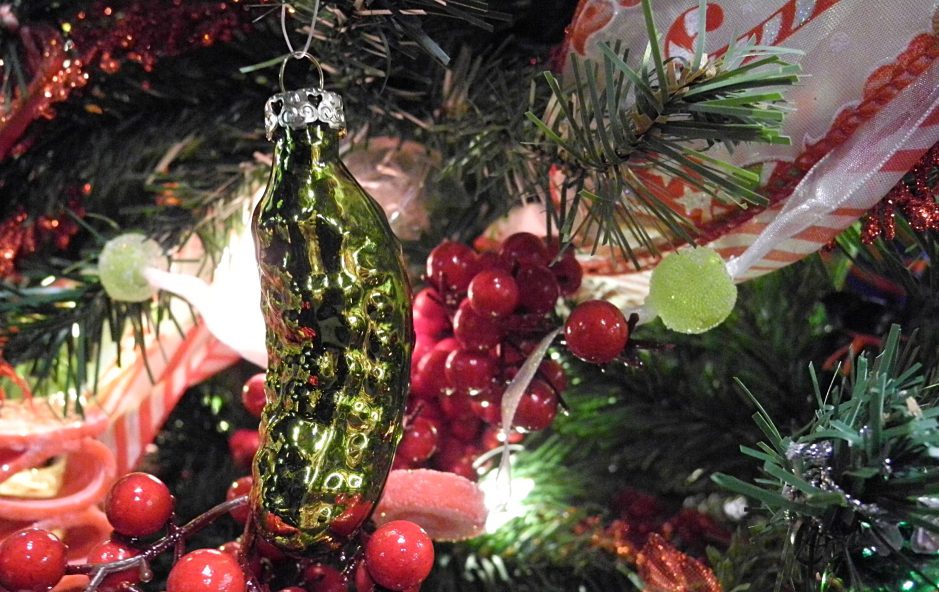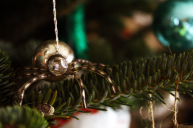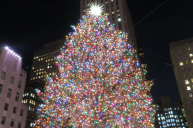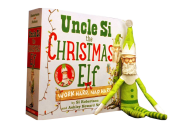If you've ever spotted a pickle ornament hanging from someone's Christmas tree, you probably found it a bit odd, but it's part of a fun holiday tradition. And no, it has nothing to do with a pickle barrel.
On Christmas Eve, parents hide the pickle-shaped ornament —often called the weihnachtsgurke— somewhere on the tree. Whichever child spots it first on Christmas morning gets to open the first present. Additionally, whoever finds the ornament will have good luck for a year.
Another version of this holiday tradition says that whoever spots the pickle first gets an extra present. Whether you'd rather promote guaranteed good fortune or get the family excited about extra gifts, there's no doubt the Christmas pickle tradition sounds like fun.
"Today" suggests that "the idea behind the tradition is to keep kids from rushing through the process of opening presents so they can learn to appreciate each gift."
Thus, it's fun and practical for families with kids.
The true story behind Christmas pickle ornaments is unclear. There's multiple legends and supposed cultural practices behind what's become a lucrative import business. Read on to learn more about the tradition's disputable origins and its relevance in the 21st century.
Potential Origins of the Christmas Pickle Ornament Tradition
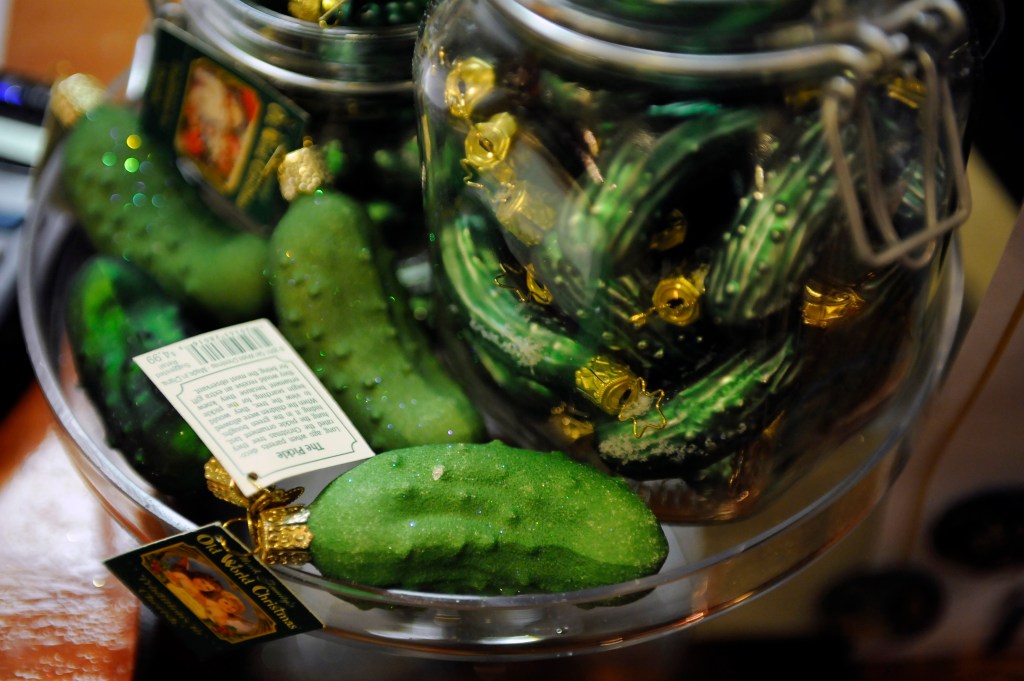
Matt McClain for the Washington Post
According to Tampa Bay Magazine, the tradition is said to have started in Germany, but this is unlikely to be true since modern Germans do not practice it. This is a common American misconception, believing that the pickle ornaments are known locally to Germans. Many glass pickle ornaments are made in Germany, but they are for export, not for the local market. The New York Times adds more confusion, reporting that 91 percent of German citizens polled in a YouGuv survey have never heard of the weihnachtsgurke and only two percent participate in the tradition.
Silke-Maria Weineck, a professor of German Studies and Comparative Literature at the University of Michigan, talked to "Today" about the pickle ornament's potential origin.
"It could have been one immigrant family's tradition, for all we know," she said. "I could also imagine that we were originally dealing with an actual pickle prepared for the holidays. Americans are notoriously quick to claim something is 'a tradition.'"
Instead, it's likely that the story started as a marketing ploy to sell German glass ornaments to Americans. F.W. Woolworth, the Five & Dime store magnate, began importing the ornaments in 1880. He sold them along with a card that told the story of the tradition. Old World Christmas is among the current companies keeping the tradition alive.
If that's the case, it wouldn't be the first Christmas tradition that started with marketing. Rudolph the Red-Nosed Reindeer (maybe you've heard of him, he saved Santa's sleigh) originated as an advertising campaign by the now-defunct department store Montgomery Ward.
Other origin stories range from the story of a captured Civil War soldier's final meal to the legend of an evil innkeeper —or a cannabalistic butcher, depending on the tradition— who's defeated by St. Nicholas.
An Enduring Tradition
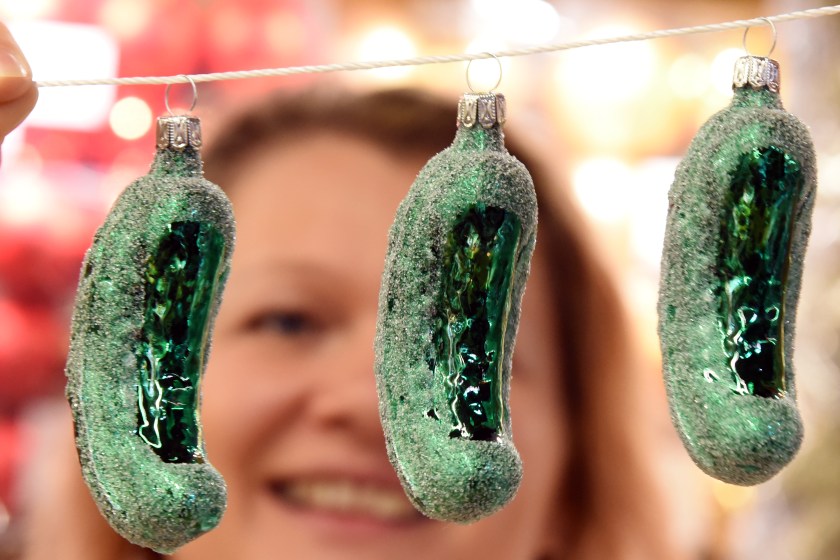
Waltraud Grubitzsch/picture alliance via Getty Images
Nowadays, the tradition mainly popular in Midwestern states, especially Michigan, where there's a large population of German immigrants. Per Southern Living, Berrien Springs, Mich. is the Christmas Pickle Capital of the World and the former home of an annual Christmas pickle festival.
But it has been picking up steam all over the country. Any tradition that leads to more Christmas gifts and good luck all year is bound to catch on.
Where to Get a Pickle Ornament
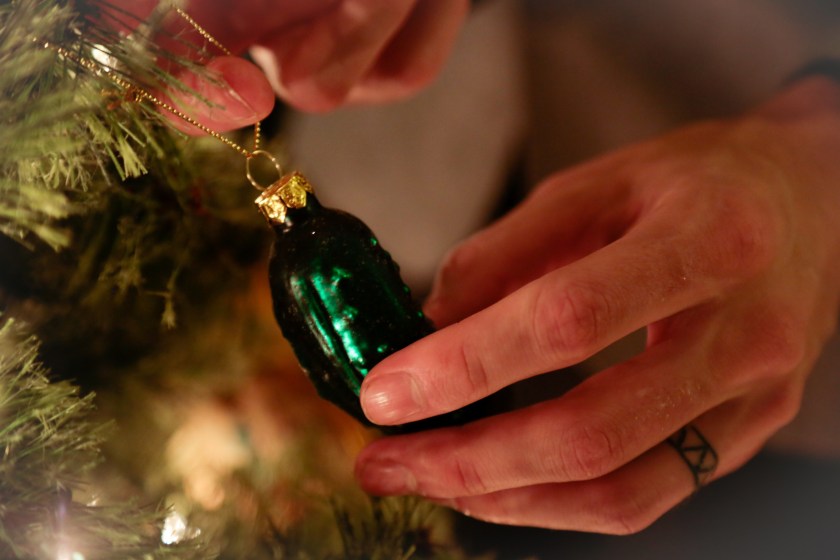
Getty
Looking to get into the Christmas pickle tradition? Snag your own here.
This article was originally published in 2017. It was updated on Dec. 18, 2023.
